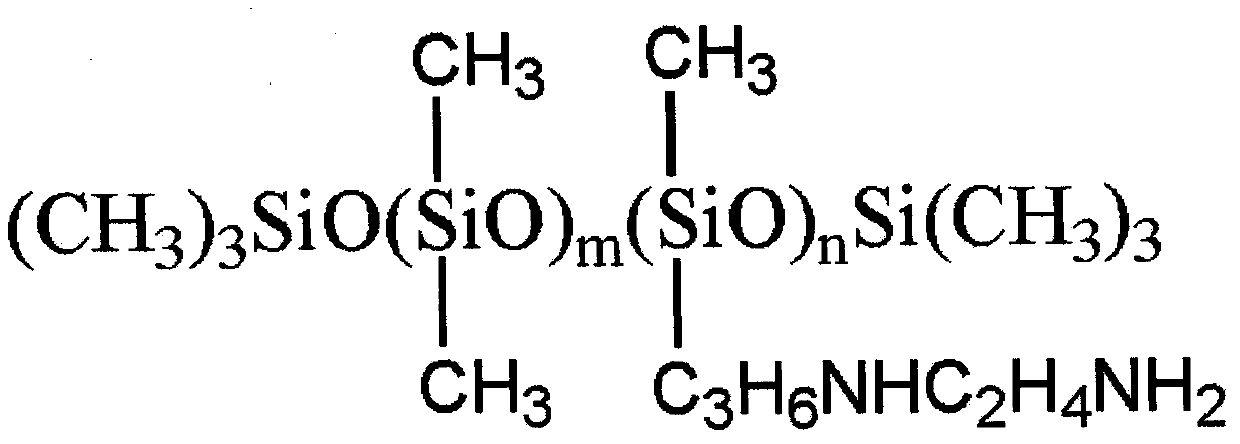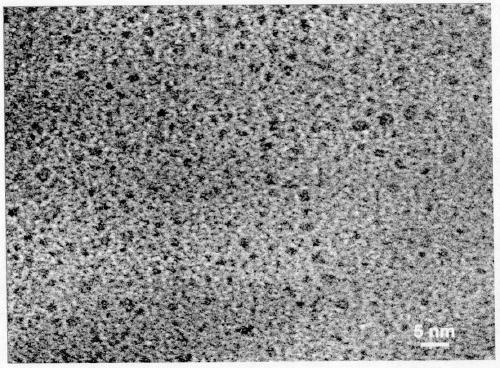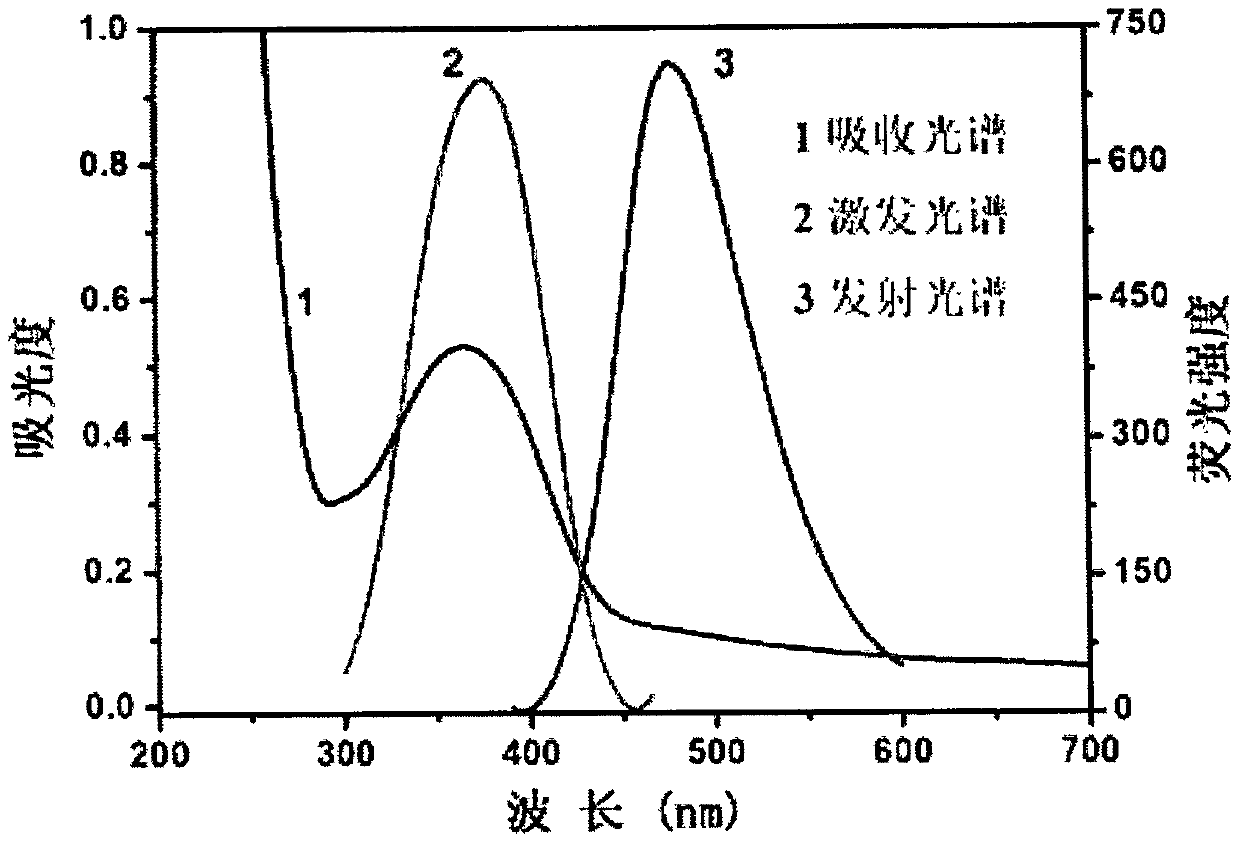A kind of synthetic method of polysiloxane modified carbon quantum dot
A synthesis method and technology of carbon quantum dots, applied in chemical instruments and methods, nanotechnology for materials and surface science, luminescent materials, etc., can solve the problem of single types of compounds on the surface of carbon quantum dots, low fluorescence quantum efficiency, Poor water solubility of polymers and other problems, to achieve the effect of cheap raw materials, high fluorescence intensity, and short preparation cycle
- Summary
- Abstract
- Description
- Claims
- Application Information
AI Technical Summary
Problems solved by technology
Method used
Image
Examples
preparation example Construction
[0033] The specific embodiment of the present invention provides a kind of synthetic method of polysiloxane modified carbon quantum dot, synthetic method comprises the following steps:
[0034] 1) Prepare citric acid solution: add citric acid to deionized water, stir until citric acid is fully dissolved into deionized water;
[0035] 2) Adding the polysiloxane emulsion to the citric acid solution in step 1), stirring evenly to obtain a mixed solution, and then placing the mixed solution in a constant temperature drying oven for hydrothermal reaction to obtain a light yellow solution;
[0036] 3) Suction filter the light yellow solution in step 2) to obtain a light yellow transparent filtrate, and dilute the light yellow transparent filtrate with deionized water to obtain a polysiloxane-modified carbon quantum dot solution.
[0037] Further preferably, in step 1), 2 g of citric acid is dissolved in 25 ml of deionized water.
[0038] Further preferably, in step 2), polysiloxane...
Embodiment 1
[0045] 1) Prepare citric acid solution: add 2 g of citric acid to 25 ml of deionized water, and stir until the citric acid is fully dissolved in the deionized water;
[0046] 2) Add polysiloxane emulsion with a volume of 12.5mL to the citric acid solution in step 1), stir for 30min, and stir evenly to obtain a mixed solution, then take 30mL of the mixed solution and place it in a constant temperature drying box for hydrothermal reaction. A light yellow solution was obtained; specifically: the mixed solution was placed in a polytetrafluoroethylene liner of a reactor for hydrothermal reaction, the temperature of the thermal reaction was set at 180° C., and the reaction time was set at 8 hours.
[0047] 3) Suction filter the light yellow solution in step 2) to obtain a light yellow transparent filtrate, and dilute the light yellow transparent filtrate 100 times with deionized water to obtain a polysiloxane-modified carbon quantum dot solution.
[0048] In order to further illustr...
PUM
| Property | Measurement | Unit |
|---|---|---|
| particle diameter | aaaaa | aaaaa |
Abstract
Description
Claims
Application Information
 Login to View More
Login to View More - R&D
- Intellectual Property
- Life Sciences
- Materials
- Tech Scout
- Unparalleled Data Quality
- Higher Quality Content
- 60% Fewer Hallucinations
Browse by: Latest US Patents, China's latest patents, Technical Efficacy Thesaurus, Application Domain, Technology Topic, Popular Technical Reports.
© 2025 PatSnap. All rights reserved.Legal|Privacy policy|Modern Slavery Act Transparency Statement|Sitemap|About US| Contact US: help@patsnap.com



